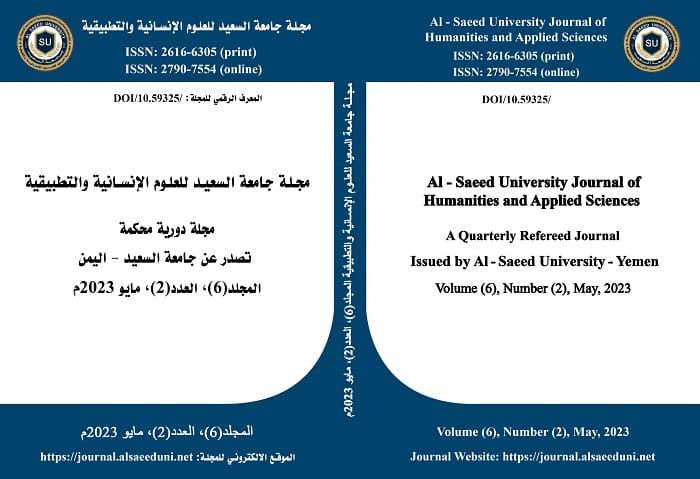تأثير الودائع والقروض المصرفية على ربحية البنوك التجارية دراسة تطبيقية قياسية للبنك الأهلي اليمني وبنك اليمن الدولي
DOI:
https://doi.org/10.59325/sjhas.v6i2.157الكلمات المفتاحية:
الودائع المصرفية، القروض المصرفية، الربحية، معدل العائد على الموجودات (ROA)، معدل العائد على حقوق الملكية (ROE).الملخص
هدفت هذه الدراسة إلى توضيح مدى تأثير كل من الودائع المصرفية بأشكالها الثلاثة (الجارية- التوفير- الثابتة) والقروض المصرفية على ربحية البنوك التجارية عينة الدراسة، ولتحقيق أهداف البحث تم وضع الفرضيات لحل مشكلة البحث والتي توضح مدى تأثير كل نوع من أنواع الودائع المصرفية والقروض على مؤشري الربحية مقاسًا بـــمعدل العائد على الموجودات (ROA)، ومعدل العائد على حقوق الملكية (ROE).
وقد تم تحليل بيانات كل من البنك الأهلي اليمني (بنك عام)، وبنك اليمن الدولي (بنك خاص) للفترة من (2012-2019) واستخدام نموذج الانحدار الخطي البسيط واستخراج النتائج عبر برنامج SPSS، وتم الخروج بعدد من النتائج أهمها: وجود تأثير معنوي فقط لودائع التوفير على كل من ROA, ROE في البنك الأهلي اليمني، ووجود تأثير معنوي فقط للودائع الثابتة على كل من ROA, ROE في بنك اليمن الدولي. كما اظهرت النتائج عدم وجود أي تأثير للقروض المصرفية على أي من مؤشري الربحية ROA, ROE في كلا البنكين.
التنزيلات
منشور
كيفية الاقتباس
إصدار
القسم
الرخصة
يحتفظ الباحثون بحقوق النشر. ويتم ترخيص البحوث بموجب ترخيص Creative Commons CC BY 4.0 المفتوح، مما يعني أنه يجوز لأي شخص تنزيل البحث وقراءته مجانًا. وإعادة استخدام البحث واقتباسه شريطة أن يتم الإشارة إلى المصدر الأصلي. تتيح هذه الشروط الاستخدام الأقصى لعمل الباحث وعرضه.



